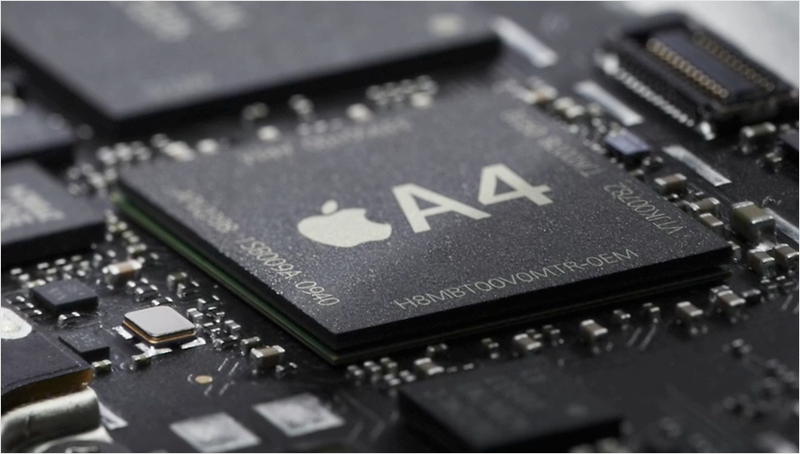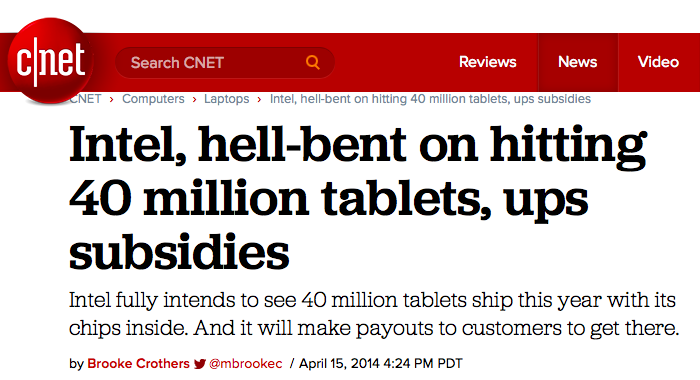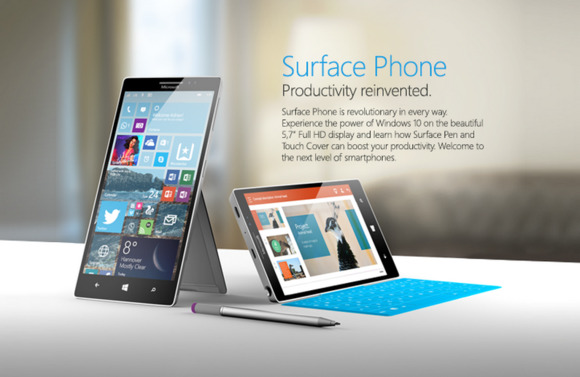Intel splits on Atom after the mobile relevance of x86 whacked by Apple's Ax
Intel is ending production of its mobile Atom processors as the reality sets in of a mobile world where virtually all the profits are inhaled by devices sold by Apple and powered by the iPhone-maker's own custom Ax series Application Processors.
Atom has Intel thinking outside the mobile box after failing to gain any traction
Intel initially intended for Atom to scale down its legacy Wintel desktop x86 processor architecture for use in efficient mobile devices such as phones and tablets, but that strategy has been effectively abandoned as the chipmaker now moves to refocus its sights on modems, data center, Internet of Things and memory chips.
The decision to cancel Atom as a mobile strategy boils down to profitability.
Despite having about as many employees globally as Apple, Intel's revenues were a quarter of Apple's last year, and the Mac-maker reported profits 4.7 times higher on sales of finished devices.
The majority of Apple's products are now powered by Ax chips the company designs internally. Other smartphone and tablet makers earn little to nothing, and virtually all have adopted the ARM architecture Apple initially co-developed back in the early 1990s for use in its Newton MessagePad tablet, offering little opportunity for Intel's rival Atom architecture to make any inroads.
How Intel lost the mobile business to Apple's Ax chips
The move kills Intel's once enthusiastic plans to muscle its way back into smartphone devices after first fumbling the ball in 2006, when its former chief executive Paul Otellini overlooked the prospect of supplying chips for Apple's original iPhone as not worth doing.
Four years later, Intel sought to win back Apple's attention with Silverthone, a new x86 chip it expected the company to use in its initial iPad. Intel subsequently rebranded the mobile x86 chip as Atom.
However, Apple passed on Intel's Atom and instead acquired the expertise to develop its own custom ARM Application Processor, known as the A4, which it used in the first iPad, then in iPhone 4 and Apple TV.
Intel's Atom jilted by Microsoft, failed by Android
The following year, at the beginning of 2011, Microsoft also snubbed Intel by showing off what would later be named Windows RT, a project to get Windows working on ARM chips— including the Qualcomm Snapdragon, TI OMAP and Nvidia Tegra chip families— in order to keep low end Windows PCs, netbooks, tablets and hybrid 2-in-1 devices competitive with Apple's increasingly popular iPad.
Intel's Atom chips were clearly unable to match the A4 iPad's battery life, but Windows RT, in the form of Microsoft's own Tegra-powered Surface RT hybrid, also failed spectacularly.
Jilted by Microsoft, Intel subsequently jumped to support Google's Android 3.0 Honeycomb also in competition with iPad, offering makers fat subsidies for building Android tablets using Intel Atom chips.
By the end of 2011, Google and Intel had also announced plans, as optimistically reported by Reuters, to "work together to optimize future versions of Google's Android mobile software for Intel's Atom processors, hoping to speed the development and time-to-market of future Intel-powered smartphones."
However, Android did nothing to help Intel gain any traction in smartphones. And despite spending billions to subsidize Atom-powered Android tablets, those never made any money either.
In 2014, Intel shifted its plans to instead license its x86 Atom, 3G and LTE baseband IP to Chinese fabless chip designers including Rockchip, Spreadtrum and RDA Microelectronics, intending to follow a licensing model similar to ARM or Qualcomm. Those plans were branded as "SoFIA".
As AppleInsider outlined a year ago, the prospect for Intel to turn Atom around and make x86 relevant in on mobile devices again was essentially zero.
End of the road for fantasies of a Microsoft Surface Phone running Windows apps
As noted yesterday by PC World, the cancelation of phone-scaled Atom chips by Intel also "casts a dark shadow over the rumored Surface Phone," a vaporware product that imagined packing a desktop PC into a smartphone, which could then be plugged into a monitor and keyboard using Microsoft's "Continuum" strategy to run legacy x86 software.
Intel will kill off its "Broxton" Atom and SoFIA architectures, leaving behind only a low end chip using the Atom brand aimed at basic desktop PCs, effectively pulling out of the business of powering iPad-class tablets or smartphones.
That leaves Microsoft in the position of selling Windows 10 Mobile only on ARM, and Windows 10 desktops and hybrids (like the Surface Pro 4) only running desktop x86 processors. Without the ability to emulate x86 code on ARM, that leaves Windows focused entirely upon "UWP," the Universal Windows Platform introduced for Windows 10 intended to stretch generic software across a variety of device types and form factors, from touchscreen phones to a mouse driven desktop.
That's a strategy that hasn't worked well for Android, where apps generally target phones and don't offer specialized optimization for tablets or other form factors.
Microsoft's UWP hasn't exactly seen enthusiastic adoption either, with legacy software still bound to mouse driven desktop PCs running x86, and mobile devices running Windows 10 so commercially irrelevant that developers have little reason to bother targeting them.
It is, however, good news for Apple, considering that the company now has a very large platform for iOS, with clear optimization for iPhone and iPad hardware. That has resulted in enthusiastic Enterprise adoption. In its last earnings call, Apple noted that "the latest data published by IDC indicates that iPad accounts for 72% of the U.S. commercial tablet market, comprising business, government, and education."
 Daniel Eran Dilger
Daniel Eran Dilger














 Andrew Orr
Andrew Orr
 Sponsored Content
Sponsored Content
 Malcolm Owen
Malcolm Owen

 William Gallagher
William Gallagher

 Mike Wuerthele
Mike Wuerthele
 Christine McKee
Christine McKee






